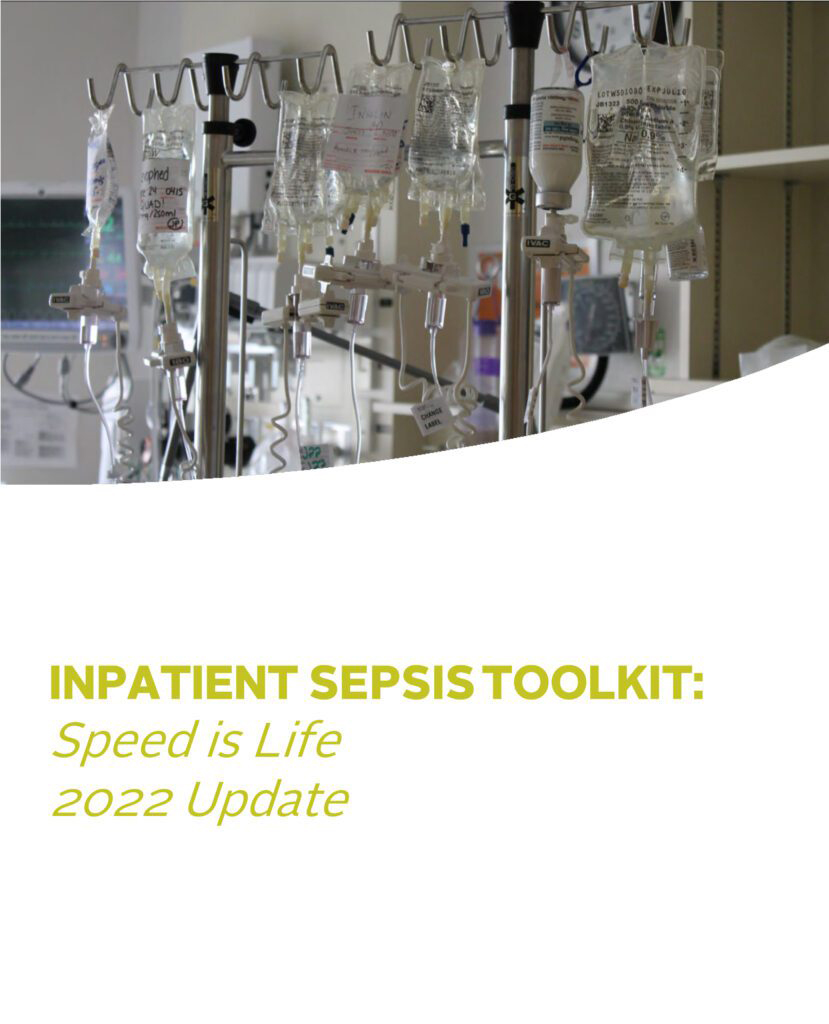- Sepsis
Inpatient Sepsis Toolkit

Our Inpatient Sepsis Toolkit aims to provide BC inpatient hospital wards with information, resources and tools to successfully initiate, implement and spread best practices for sepsis in adult populations across BC. The 2022 update reflects recommendations from the most recent version of the Surviving Sepsis Guidelines. Want to learn more about the updates? Watch the recording from our recent BC Sepsis Network webinar.
There are three key components to recognizing and responding to sepsis for inpatients:
- Timely recognition of early infection.
- Early treatment with antibiotics and intravenous fluids.
- Appropriate escalation to high-acuity or ICU care.
In 2014, teams from inpatient units in seven hospitals across BC took part in a pilot project to improve sepsis recognition and treatment. Led by the Sepsis Clinical and Quality Lead from the BC Patient Safety & Quality Council, the Sepsis Inpatient Pilot Project began in early 2015. Throughout the project, teams tested screening tools, prescriber order sets, and measurement tools. The Pilot Project culminated in a full day meeting in November 2015 where teams compared data and provided feedback on the testing and validation of these tools. This BC Inpatient Sepsis Improvement Toolkit: Speed is Life was created as a resource to help other teams around the province build from this experience and implement best practices in sepsis care for inpatients across BC.
This Toolkit is designed for multidisciplinary teams and clinical leaders working on inpatient wards who want to be able to recognize the signs and symptoms of sepsis early and treat it effectively. While knowledge of quality improvement science is helpful when undertaking any change, the toolkit was developed for those without formal training in quality improvement or change management techniques.
This Toolkit, updated in 2022, includes evidence-based and locally tested tools and resources to:
- Support clinicians with knowledge and tools for sepsis identification, management, treatment, and escalation of care for adult populations;
- Reduce avoidable sepsis related morbidity, mortality, and costs; and
- Improve the quality and safety of care for patients with sepsis.
The resources and tools contained in this toolkit are not exhaustive and sites are encouraged to adapt and build on these resources to suit their local context.

